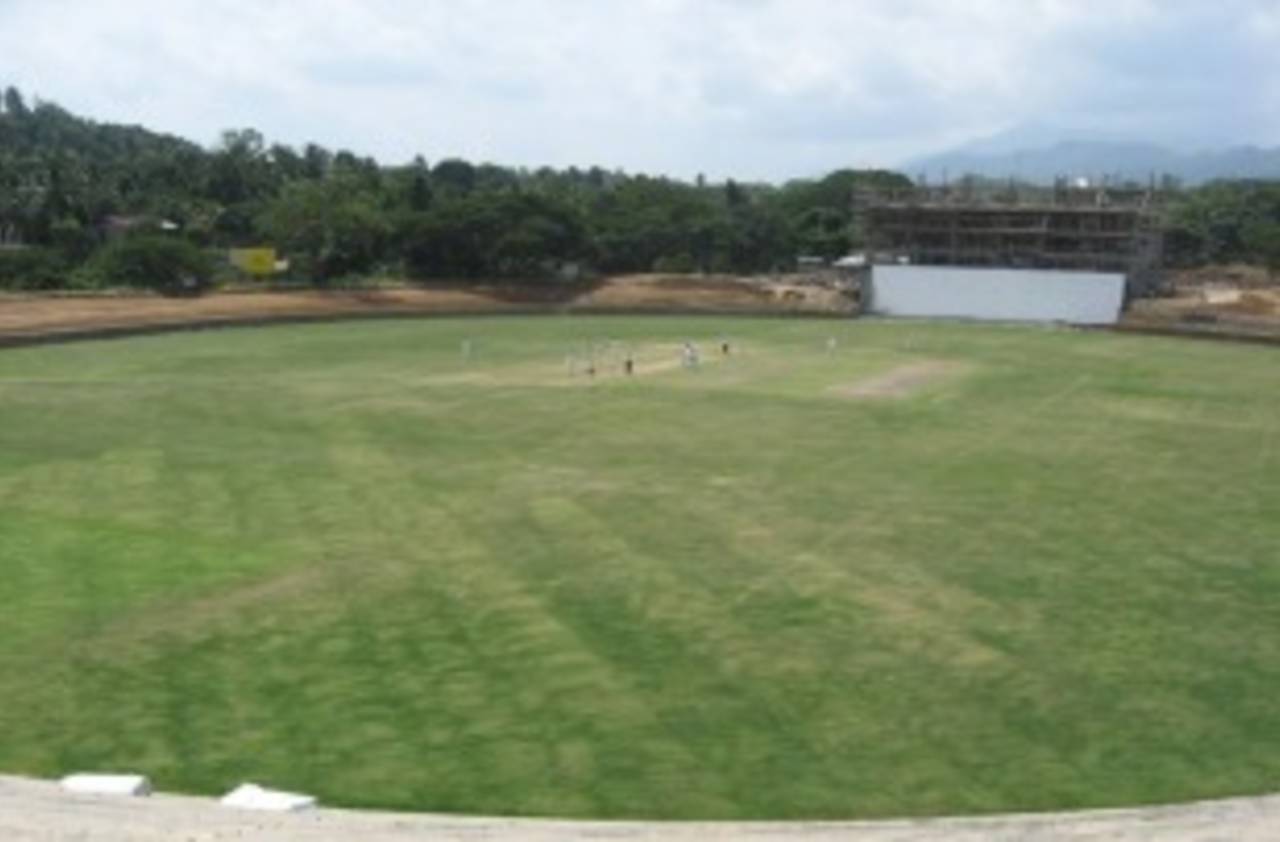Pallekele International Cricket Stadium, one of Sri Lanka's three venues being developed for next year's World Cup, is the ground organisers are most confident about, in terms of how the pitch will behave and completing the construction sufficiently in time. "We have no fears," Suraj Dandeniya, director of the World Cup secretariat, said, "because we are playing matches, we are playing South Africa, New Zealand, all those matches, so it is 100% sure that the pitch is complete."
Getting to the stadium involves a lovely half-hour drive from the city of Kandy. You get to take in the two-century old man-made Kandy Lake, which is the centerpiece of the city, before moving along to some twisty Hill Country streets. Next up on the ride is the bridge across the majestic Mahaweli river, the largest in the country, followed by a canopied stretch past the Sri Lankan International Buddhist Academy before turning into the plush-looking Kandy Industrial Park a few kilometers ahead where the ground is located.
There's still no sign of the stadium, and after a short walk up a dusty path (the security guard assures you the ground is at the end of it), the first thing you notice is the cling-clang of construction work before seeing metal scaffolding, the barebones of a three-storey structure and plenty of men in hard hats. Get closer to the construction, and there's a massive arc of mud to the left, suitable perhaps for a dirt-bike race. This place is going to host World Cup matches, you wonder.
It is only when you stride towards the mud track that you first glimpse the familiar green of a cricket outfield. There's a match on between the Sri Lankan and South African A teams, and just then Thilina Kandamby punches the ball towards long-on, and it rolls smoothly along the outfield. Once you have taken in the reassuring sight of the level and lush playing area, there is the largely-completed structure of the stand at the pavilion end. There's still work to be done on the corporate boxes on the upper tier, and there's no sign of the grandstand's roof yet, but the lower uncovered part of the stand is more or less finished. You can't help but notice another dirt-bike track sweeping from third man to extra cover on the right, complementing the one to your left, but you start to believe this venue can be ready for its big day in seven months' time.
Perhaps the biggest concern about a new stadium is over the manner in which the pitch will behave. Preparing a new turf pitch is a complicated art, but unlike the other two venues that SLC is developing for the World Cup (the R Premadasa in Colombo and a new one near the southern cost town Hambantota) which are yet to be properly tested, the pitches at Pallekele have had matches since November 2009. A chunk of last season's domestic Twenty20 matches took place in February, there has been a first-class and List A game as well, and touring international teams, including Ross Taylor's New Zealand side, are becoming regular fixtures. There haven't been any pitch-behaviour complaints during these matches, leaving the organisers supremely confident about the venue.
The Pallekele stadium is wholly owned by Sri Lanka Cricket and is set to displace the Asgiriya stadium, which has hosted Tests for nearly 25 years, as the international venue of choice around Kandy. It is being built by the government-owned State Engineering Corporation of Sri Lanka and is designed along the lines of SuperSport Park in Centurion. Like the South African stadium, Pallekele too will have a capacity of 22,000 and the muddy eyesores embracing the ground on both sides are soon expected to be transformed into a replica of Centurion's famed grass embankments.
The grass banks are part of a plan to ensure watching cricket at the stadium, nestled amid a ring of trees, provides a unique experience, unlike the concrete-sameness that blights some of the world's larger cricket venues. The under-construction three-storey structure that greets you at the entrance, the organisers say, will turn into a distinctive and futuristic-looking press box.
Built so close to Kandy, which as several congratulatory signboards remind you, is the home town of Muttiah Muralitharan, Pallekele's stadium could soon be renamed after Sri Lanka's greatest cricketer. Murali's already bid adieu to the Test scene, and the World Cup could well be his final appearance for the national team. Come March 10, when Pallekele hosts the Sri Lanka-Zimbabwe league game, expect Kandyans to pack the place for one last chance to see their favourite son.
Siddarth Ravindran is a sub-editor at Cricinfo
